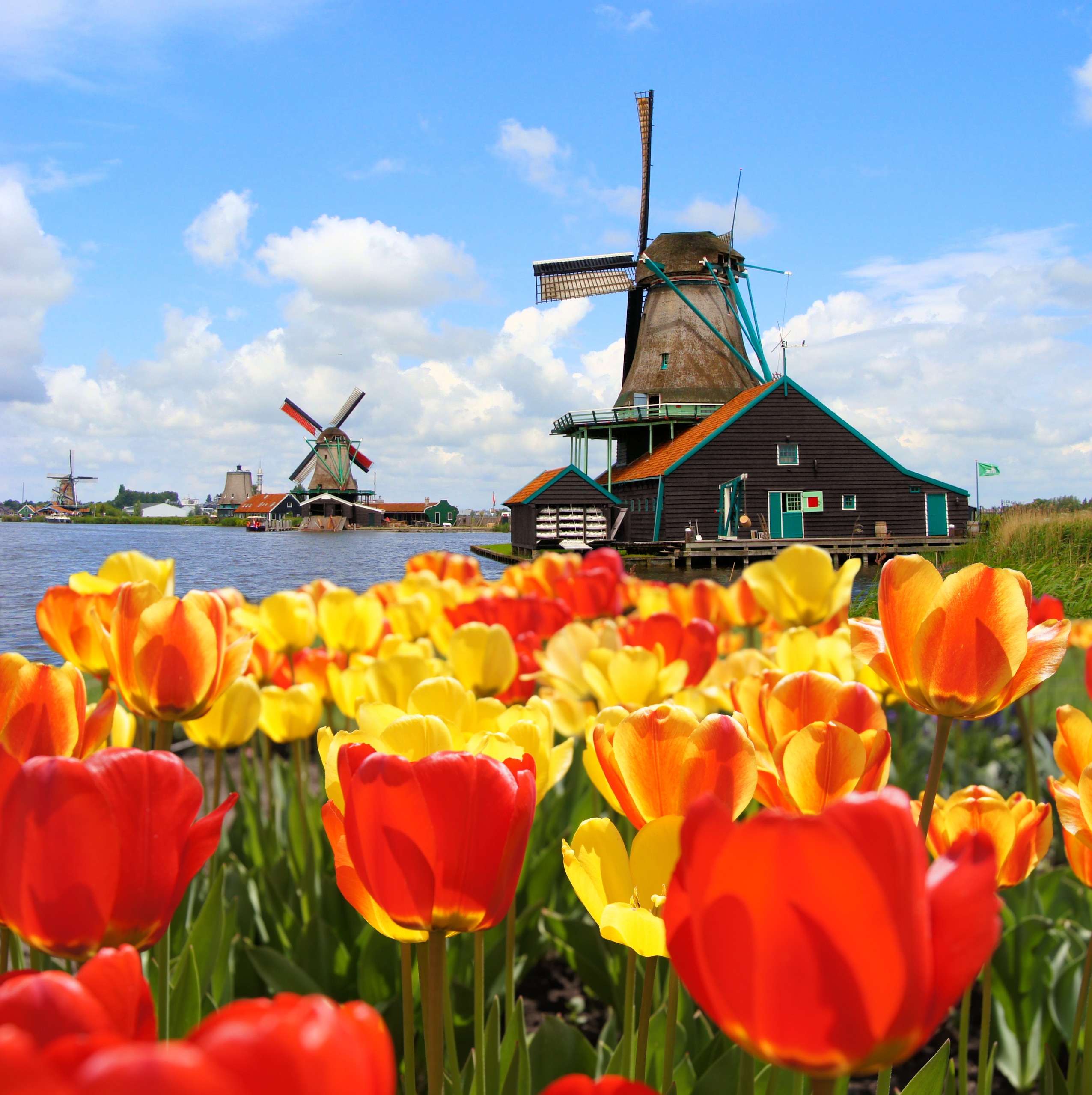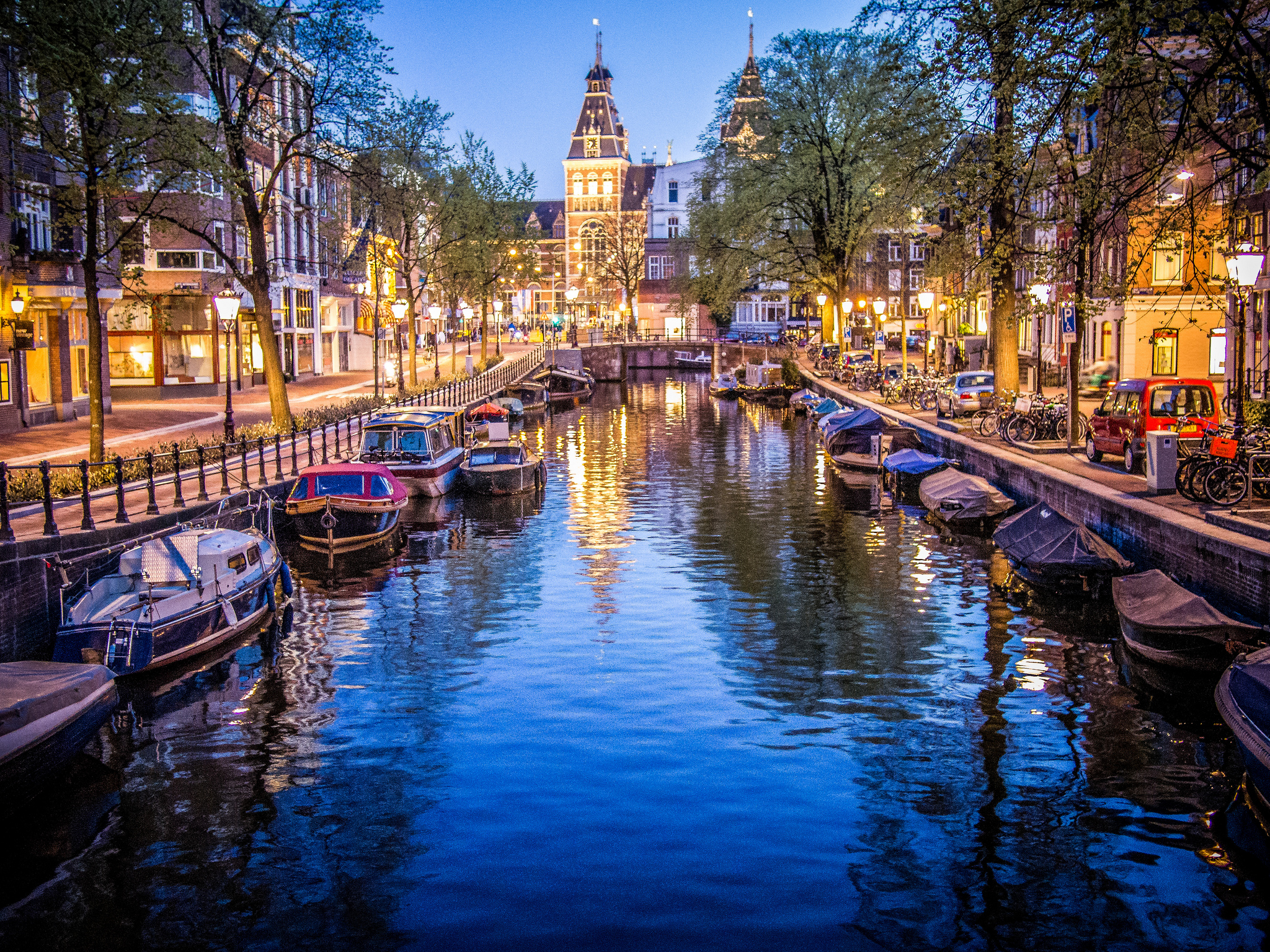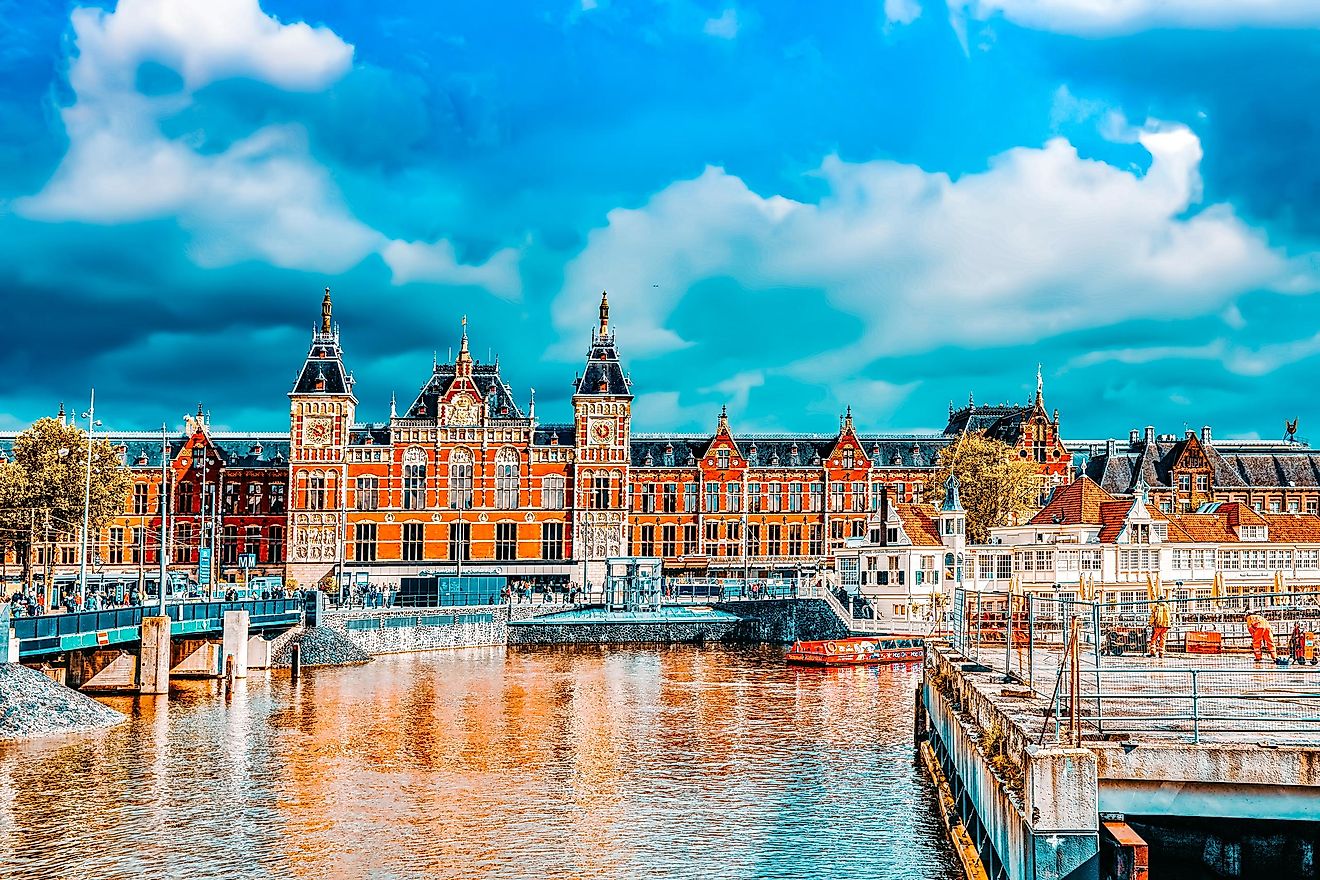Holland Tunnel Closures: Navigating NYC's Vital Lifeline
Understanding the Holland Tunnel's Crucial Role
The Holland Tunnel is more than just a passage; it is a vital artery connecting Manhattan to Jersey City, New Jersey. Its two tubes, one for eastbound traffic and one for westbound, carry an immense volume of vehicles daily, facilitating commerce, tourism, and daily commutes. As one of the primary conduits across the Hudson River, its operational status directly influences the flow of goods and people throughout the tri-state area. The tunnel's design, featuring groundbreaking ventilation systems for its time, allowed for the safe passage of gasoline-powered vehicles, a revolutionary concept that paved the way for modern vehicular tunnels worldwide.A Historical Perspective
Conceived in the early 20th century, the Holland Tunnel was a monumental undertaking. Designed by Clifford Milburn Holland, who tragically died before its completion, the tunnel was a response to the growing need for direct vehicular access between New York City and New Jersey. Prior to its opening in 1927, crossing the Hudson often involved ferries, which were slow and inefficient for the burgeoning automobile industry. The tunnel's construction faced immense engineering challenges, particularly concerning ventilation to prevent carbon monoxide buildup from vehicle exhausts. Its innovative ventilation buildings, equipped with massive fans, were a testament to the foresight and ingenuity of its creators. This historical context underscores the tunnel's enduring legacy and its continued importance, even nearly a century after its inauguration.Why the Holland Tunnel Matters to NYC and NJ
The significance of the Holland Tunnel extends far beyond mere transportation. It is a linchpin for economic activity, enabling the swift movement of goods from New Jersey's port facilities to New York City's vast consumer market. For commuters, it offers a direct route for those living in New Jersey but working in Manhattan, and vice-versa, significantly reducing travel times compared to alternative routes or public transport options for certain journeys. The tunnel also plays a crucial role in regional tourism, providing easy access for visitors arriving from points west. Any disruption, such as a Holland Tunnel closure, therefore has immediate and widespread implications, affecting not just individual travel plans but also the broader regional economy and daily life.The Nuances Behind the Name: Holland vs. The Netherlands
Before delving deeper into the operational aspects and impacts of a Holland Tunnel closure, it's worth clarifying a common point of confusion that often arises when discussing its name: the distinction between "Holland" and "The Netherlands." While the tunnel is undeniably named "Holland," this term itself carries a rich geographical and historical context that many people outside of Europe might not fully grasp. It's important to distinguish the Holland Tunnel from other entities bearing the name 'Holland,' such as the renowned Holland & Holland luxury firearms or Holland Air Conditioning and Heating, as these are entirely separate entities with no direct connection to the tunnel's operations or its closures.Deconstructing the Geographical and Political Distinctions
Many people seem to think that the two names are interchangeable, but North Holland and South Holland are actually just two of the provinces within the Netherlands. The Netherlands is a country located in northwestern Europe, also known as Holland. The map above shows the difference pretty clearly: Holland is a geographic region that is situated on the western coast of the Kingdom of the Netherlands. Holland is made up of the two provinces of Noord (North) Holland and Zuid (South) Holland. The difference between Holland and the Netherlands is that the former is a province, while the latter is the name of the entire country, according to the CIA World Factbook. The Netherlands (also referred to as Holland) is a country that is part (of a constituent country) of the Kingdom of the Netherlands. Most of it is in Western Europe, but there are also some parts. Although some people use Holland when they are referring to the country of the Netherlands, Holland is actually a region on the west coast of Netherlands, two of Netherlands' 12 provinces. Discover the reasons why the Netherlands is called Holland: the Netherlands is called Holland because Holland has always been the most important and influential part of the region. From the 10th to the 16th century, Holland proper was a unified political region within the Holy Roman Empire, signifying its historical prominence.The Tunnel's Naming: A Link to Early Dutch Influence?
Given the geographical clarification, why is the tunnel named "Holland Tunnel" and not "Netherlands Tunnel"? The naming of the tunnel is primarily attributed to Clifford Milburn Holland, its chief engineer. However, the choice of "Holland" rather than "Netherlands" for the tunnel's name also subtly reflects the significant historical Dutch influence in the early settlement and development of New York (originally New Amsterdam). The region of New York and New Jersey has deep historical ties to the Dutch, with many place names, including boroughs and streets, reflecting this heritage. While the tunnel is named after its engineer, the resonance of "Holland" as a powerful and historically significant part of the Netherlands likely contributed to its lasting recognition, making it a fitting name for a structure connecting two regions with such a rich shared past. This historical and cultural context adds another layer to understanding the tunnel's identity, distinct from a modern geographical or political designation.Common Reasons for Holland Tunnel Closures
A Holland Tunnel closure can occur for a variety of reasons, ranging from routine maintenance to unforeseen emergencies. Understanding these causes helps commuters anticipate potential disruptions and plan accordingly. The Port Authority of New York and New Jersey (PANYNJ), which operates the tunnel, prioritizes safety and structural integrity, leading to necessary closures. * **Maintenance and Infrastructure Upgrades:** Given its age and the constant wear and tear from millions of vehicles, the Holland Tunnel requires continuous maintenance. This includes structural repairs, upgrades to its ventilation systems, electrical work, paving, and painting. Often, these planned maintenance activities are scheduled during off-peak hours, such as overnight or on weekends, to minimize disruption. However, extensive projects may necessitate longer or more frequent closures. * **Emergency Situations and Accidents:** Unforeseen events like vehicle accidents, breakdowns, or fires within the tunnel can trigger immediate closures. These situations require rapid response from emergency services to ensure public safety and clear the obstruction. The confined nature of a tunnel means that even minor incidents can lead to full closures to allow emergency personnel to operate safely and effectively. * **Weather-Related Disruptions:** Severe weather conditions, particularly flooding or heavy snow, can also lead to a Holland Tunnel closure. While the tunnel is designed to withstand various weather phenomena, extreme events can compromise safety or make access impossible. For instance, coastal storms can cause flooding at the tunnel's entrances or exits, rendering it impassable. * **Security Measures and Special Events:** In rare instances, security threats or major public events in New York City or Jersey City might necessitate a temporary Holland Tunnel closure. These are typically preemptive measures taken to ensure public safety or to manage traffic flow around large gatherings.Impact of Holland Tunnel Closures on Commuters and Commerce
The ramifications of a Holland Tunnel closure extend far beyond simple inconvenience. For the millions who rely on this critical link, closures can lead to significant delays, increased fuel consumption, and heightened stress. Commuters often face the difficult choice of finding alternative routes, which are frequently congested, or utilizing public transportation options that may not be direct or convenient for their specific journey. The domino effect on traffic can be seen across Manhattan, Jersey City, and surrounding areas, as vehicles divert to other crossings like the Lincoln Tunnel, George Washington Bridge, or various ferry services, overwhelming these alternatives. From a commercial standpoint, the impact is substantial. Businesses that depend on timely deliveries or the movement of goods across the Hudson River face increased operational costs due to longer travel times and potential penalties for delayed shipments. The trucking industry, in particular, feels the brunt of these closures, as rerouting large vehicles can be complex and time-consuming. This can translate into higher prices for consumers, reduced efficiency for supply chains, and a general dampening effect on economic activity in the immediate region. For the tourism sector, delays can frustrate visitors and impact their travel itineraries, potentially affecting local businesses that rely on tourist traffic. The economic cost of traffic congestion due to a Holland Tunnel closure is immense, underscoring its vital role in the region's prosperity.Navigating Closures: Strategies for Commuters and Businesses
While a Holland Tunnel closure can be disruptive, proactive planning and access to real-time information can significantly mitigate its impact. Both individual commuters and businesses can adopt strategies to navigate these challenges effectively. For commuters: * **Stay Informed:** Before embarking on your journey, always check real-time traffic updates from sources like the Port Authority's official website, traffic apps (e.g., Waze, Google Maps), and local news channels. Many apps provide push notifications for major disruptions. * **Utilize Public Transportation:** Consider alternative public transit options such as PATH trains, NJ Transit buses and trains, or ferry services. While these might not be direct for every destination, they often offer a more reliable alternative during tunnel closures. * **Plan Alternative Routes:** Familiarize yourself with other cross-Hudson routes like the Lincoln Tunnel or George Washington Bridge, but be prepared for increased congestion on these alternatives during a Holland Tunnel closure. * **Adjust Travel Times:** If possible, adjust your travel schedule to avoid peak hours, or consider leaving earlier or later to bypass the heaviest traffic. * **Work Remotely:** For those with flexible work arrangements, remote work can be an excellent solution to avoid the hassle of commuting during a tunnel closure. For businesses: * **Diversify Logistics:** Businesses relying on the Holland Tunnel for deliveries should establish contingency plans that include alternative shipping routes and modes of transport. * **Communicate with Stakeholders:** Keep clients, suppliers, and employees informed about potential delays and adjusted delivery schedules. Transparency can help manage expectations and maintain good relationships. * **Leverage Technology:** Utilize logistics software that provides real-time traffic data and route optimization to make informed decisions about delivery schedules and driver assignments. * **Flexible Work Policies:** Implement or expand remote work policies for employees who commute through the tunnel, reducing the impact on productivity during closures. By adopting these strategies, individuals and businesses can minimize the stress and economic fallout associated with a Holland Tunnel closure, ensuring smoother operations even in the face of disruption.The Port Authority's Role in Managing Tunnel Operations
The Port Authority of New York and New Jersey (PANYNJ) bears the immense responsibility of overseeing the Holland Tunnel's operations, maintenance, and safety. This includes everything from routine inspections and repairs to managing emergency responses and communicating with the public during a Holland Tunnel closure. The PANYNJ employs a dedicated team of engineers, maintenance crews, and security personnel who work around the clock to ensure the tunnel remains safe and functional. Their responsibilities are multifaceted: * **Infrastructure Management:** Regularly assessing the structural integrity of the tunnel, its ventilation systems, lighting, and emergency exits. This proactive approach helps identify potential issues before they escalate into major problems. * **Traffic Management:** Implementing strategies to optimize traffic flow, including lane management, electronic signage, and coordination with local law enforcement. * **Emergency Preparedness:** Developing and regularly practicing protocols for various emergency scenarios, such as accidents, fires, or security threats, to ensure rapid and effective response. * **Public Communication:** Providing timely and accurate information to the public regarding closures, delays, and alternative routes through various channels, including their official website, social media, and direct alerts. * **Technological Integration:** Investing in advanced technologies for monitoring, security, and traffic management to enhance the tunnel's efficiency and safety. The PANYNJ's commitment to these areas is crucial for maintaining the Holland Tunnel as a reliable and safe passage, despite the challenges posed by its age and the sheer volume of traffic it handles. Their expertise and authoritativeness are central to managing this vital piece of infrastructure.Future Outlook: Modernizing the Holland Tunnel for Tomorrow
As the Holland Tunnel approaches its centennial, the focus is increasingly on modernization and ensuring its continued viability for future generations. The challenges of an aging infrastructure, coupled with ever-growing traffic demands and the impacts of climate change, necessitate significant investment and innovative solutions. The Port Authority of New York and New Jersey is actively pursuing projects aimed at upgrading the tunnel's critical systems, enhancing its resilience, and improving the overall user experience. Future initiatives for the Holland Tunnel include: * **Resilience Projects:** Following the significant damage inflicted by Superstorm Sandy in 2012, major investments are being made to protect the tunnel from future flooding and extreme weather events. This includes raising flood barriers, installing new pumping systems, and fortifying critical electrical components. * **Technological Upgrades:** Implementing smart tunnel technologies, such as advanced traffic monitoring systems, intelligent lighting, and enhanced communication networks, to improve safety, reduce congestion, and provide real-time information to drivers. * **Structural Rehabilitation:** Ongoing and planned structural repairs to the tunnel's concrete lining, roadways, and ventilation buildings to ensure its long-term integrity and safety. * **Sustainability Initiatives:** Exploring ways to make the tunnel's operations more environmentally friendly, such as upgrading to energy-efficient lighting and ventilation systems. These modernization efforts are vital to minimize the frequency and duration of future Holland Tunnel closure events, ensuring that this historic and essential crossing continues to serve the needs of the New York-New Jersey metropolitan area for decades to come. The goal is to balance the preservation of its historical significance with the demands of modern transportation infrastructure.Conclusion
The Holland Tunnel stands as a testament to early 20th-century engineering prowess, serving as an indispensable link between New York City and New Jersey. While a Holland Tunnel closure can undoubtedly pose challenges for commuters and businesses, these disruptions are often necessary for the tunnel's ongoing maintenance, safety, and modernization. By understanding the reasons behind these closures and adopting proactive strategies for navigation, individuals and businesses can minimize their impact. The Port Authority of New York and New Jersey's diligent oversight and continuous investment in the tunnel's future underscore its critical role in the region's infrastructure. As the tunnel evolves to meet the demands of the 21st century, its enduring legacy as a vital lifeline will continue to shape the daily lives and economic landscape of one of the world's most dynamic regions. We hope this comprehensive guide has provided valuable insights into the complexities surrounding the Holland Tunnel and its operations. Have you experienced a Holland Tunnel closure? Share your tips for navigating disruptions in the comments below! If you found this article helpful, please consider sharing it with others who might benefit from this information, and explore our other articles for more insights into urban infrastructure and transportation.
14 Reasons to visit the Netherlands in Spring! - Netherlands Tourism

Holland Southern Tulip Tour Bike and Barge Tour - Netherlands | Tripsite

Holland - WorldAtlas